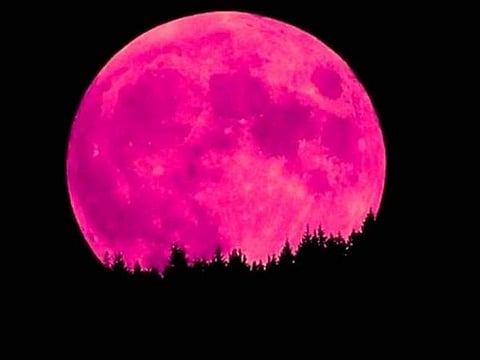Strawberry Moon graces UAE skies on Wednesday night: Last chance until 2043
Check timings of rise and set, where to get the best views, and why you shouldn’t miss it

Dubai: Eager to witness a rare Strawberry Moon – the last full Moon of Spring 2025 – which won’t appear this low in the sky again until 2043? Your wait ends on Wednesday, June 11, as it has been confirmed that the celestial treat will be visible in the UAE.
“The Strawberry Moon will be visible in the UAE, with moonrise at approximately 7.32pm on June 11 and moonset at 5.55am on June 12,” Khadijah Hasan Ahmed, operations manager at the Dubai Astronomy Group (DAG), told Gulf News on Tuesday.
The Strawberry Moon will be visible across the UAE, she confirmed. “And the best part is that you don’t need any special equipment to see it.”
Best views?
Residents can simply step outside and look toward the eastern horizon shortly after moonrise, which is at 7.32pm, as the Strawberry Moon will be visible to the naked eye under clear skies. The best views are from open areas like beaches, deserts, or high spots, but it can still be seen from the city if you have a clear view of the eastern horizon, explained Khadijah.
“Of course, using binoculars or telescopes would definitely enhance the view.”
She pointed out that it is “a beautiful, easy-to-watch celestial event that connects us with the universe because the Strawberry Moon is the last full Moon of Spring and one of the most visually striking, often appearing larger and more golden when it rises.”
Despite its name, however, the Strawberry Moon will not look pink or red. It is usually yellow or orange due to atmospheric conditions when it is low on the horizon.
Why not until 2043?
The twist about this Full Strawberry Moon that will grace the night sky on June 11 is that it is accompanied by the rare phenomenon of a Great Lunar Standstill, which happens every 18.6 years.
“In the Northern Hemisphere, it will be the lowest Full Moon until 2043, staying unusually close to the horizon. Conversely, in the Southern Hemisphere, it will be the highest Full Moon until 2043,” as explained on astronomy app Star Walk 2, said Khadijah.
“This rare positioning is due to the major lunar standstill, which is a cycle that only happens every 18.6 years. It’s like the Moon’s version of a solstice.”
So, it will be the lowest Full Moon in 18.6 years for the Northern Hemisphere, rising and setting at its most extreme south-easterly and south-westerly points. Meanwhile, in the Southern Hemisphere, it is the opposite: they will see the highest Full Moon this month, and their lowest one will come in December, she explained.
The Moon's orbit is tilted about 5.1° relative to the Earth's path around the Sun (the ecliptic), Khadijah pointed out. Because the Earth's axis is also tilted 23.4°, during a major standstill, these tilts combine, so the Moon can rise and set at its most extreme points on the horizon, farther north and farther south than usual. Hence, the Moon also appears higher or lower in the sky than normal.
Sign up for the Daily Briefing
Get the latest news and updates straight to your inbox


